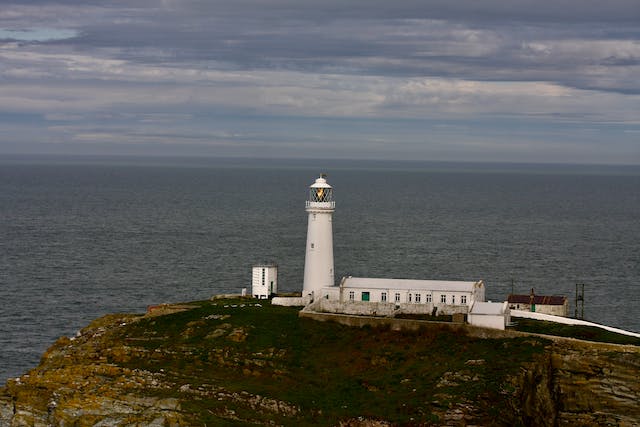
Are lighthouses still necessary? Yes, they are because technology can fail, and some things don’t show up on maps or with sonar.
The Lighthouse Directory lists 24,300 lighthouses on its site. The majority of them are still active. This fact alone is enough to show that they are still necessary. Lighthouses cost money to run and if they weren’t necessary, they would have been phased out like so many other things that we no longer need. These lighthouses are paid for by the governments of each country, but some countries subsidize those costs by charging the shipping industry. In 2009, the UK charged a single container ship $225,000 a year in lighthouse fees. Not many other countries charge, and it was feared that ships would start to avoid the UK. However, all of this shows that lighthouses are still necessary.
A lighthouse is “a tower or other structure containing a beacon light to warn or guide ships at sea”. In the very early days of seafaring, ships were guided in by fires lit on hill tops. Our eyes are very sensitive to light in the dark. At night, you could see a candle flame up to 48 km away. A beacon fire would be visible much farther away, assuming it was on a hill high enough to be seen above the horizon. The idea of putting the fire high up took on and in places where there were no natural hills, people started to put fires on towers. They were usually built next to harbors and not as warnings at dangerous places. The next step was to put mirrors in the towers so that the light from the fire could be reflected even farther away. The most famous early lighthouse was the Lighthouse of Alexandria, which was one of the seven wonders of the ancient world until it collapsed in 1323.
The number of lighthouses started to increase from the Middle Ages as the number of ships increased. The Golden Age of Sailing Ships started in the mid-15th century as more and more European countries began to explore the world. The increase in the number of ships meant there was an equal increase in the number of ships lost at sea. Nothing could be done for the ships lost in the deep seas, but for the ones lost on the rocks, there was a solution, and that solution was lighthouses. The construction of lighthouses jumped in the 18th century as more ships began to trade across the Atlantic with the New World.
Ancient sailors navigated with the stars, or by using the currents and the wave patterns. These days, ships navigate with a combination of different levels of technologies. Every system has a backup in case they fail. It is not unknown for ships to be hit by lightning and lose all of their modern navigational aids. At the top end of technology, most ships have a GPS device that always knows where they are. Their location is plotted on an Electronic Chart Display and Information System, which also knows where all other ships are as well. The ships have radar and sensors that monitor their surroundings, and they have collision monitoring software that looks out for other ships or rocks. They have a type of sonar called an echo sounder, which measures the depth of the sea to make sure they don’t run aground. Modern ships have autopilots, which plot routes and safely sail the ships. The ships also have regular charts, compasses, and analogue systems for working out where they are.
So, what are the lighthouses for if modern ships have all of this technology? The first reason they are there is to check that all of the modern technology and software is working. Technology is not 100% foolproof. Lighthouses serve as location markers. All lighthouses are marked on maps and if the pilot of the boat is expecting a lighthouse and doesn’t see it, or isn’t expecting a lighthouse and does see one, they know that their software is faulty. Also, it is not unknown for ships to have complete system malfunctions or to be struck by lightning. If this happens, they have to rely on their analogue systems to work out where they are and, in that situation, lighthouses become invaluable. Perhaps one day, there will be a cheaper way of replacing lighthouses but, for now, they are here to stay. And this is what I learned today.
Photo by John Spalding: https://www.pexels.com/photo/white-lighthouse-on-a-coast-5425672/
Sources
https://www.ibiblio.org/lighthouse/
https://www.ft.com/content/280d6a56-488c-11de-8870-00144feabdc0
https://en.wikipedia.org/wiki/Lighthouse
https://www.vice.com/en/article/gvymjj/why-are-lighthouses-still-a-thing
https://oceanservice.noaa.gov/facts/lighthouse.html
https://en.wikipedia.org/wiki/History_of_lighthouses
https://www.livescience.com/33895-human-eye.html
